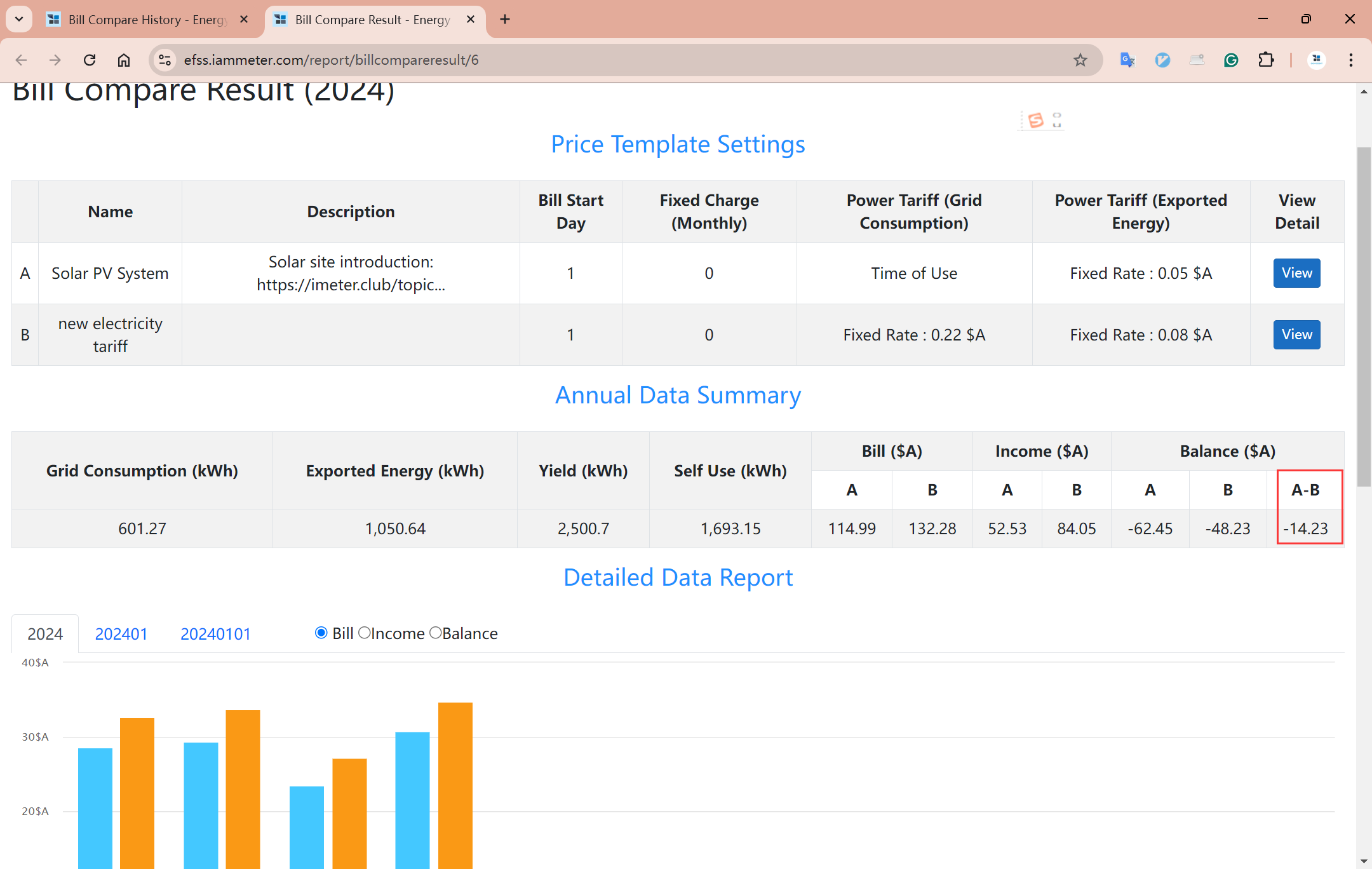Save on Electricity Bills in Australia with Solar | Best Tariff Plans for Households
How Australian Households Can Save on Electricity Bills with Solar ?
Electricity pricing in Australia is complex. Energy retailers provide multiple types of electricity tariffs, and choosing the right plan can have a huge impact on your monthly bill. Even households with solar panels may still face high electricity bills if they do not optimize their tariff plan and solar usage.
This article introduces the most common electricity tariffs in Australia, possible strategies to save money under each tariff, and how IAMMETER helps households monitor, analyze, and reduce electricity bills effectively.
Common Electricity Tariffs in Australia
Australian electricity plans usually fall into the following categories:
- Flat Rate Tariff: The same price per kWh all day.
- Time of Use (ToU) Tariff: Different prices during peak, shoulder, and off-peak periods.
- Controlled Load Tariff: Special low rates for specific appliances such as hot water systems.
- Demand Tariff: Based on the highest demand (kW) during the billing period.
- Feed-in Tariff (FiT): Credit for exporting excess solar energy back to the grid.
Saving Strategies for Different Electricity Tariffs
| Tariff Type | How to Save Money |
|---|---|
| Flat Rate | Increase solar self-consumption and reduce grid purchases. |
| Time of Use (ToU) | Shift high-energy appliances (water heater, EV charging, washing machine) to off-peak or shoulder hours. |
| Controlled Load | Connect high-power appliances like hot water heaters to the controlled load channel to use cheaper rates. |
| Demand Tariff | Avoid running multiple high-power appliances simultaneously to reduce peak demand charges. |
| Feed-in Tariff (FiT) | Maximize self-consumption of solar energy since FiT rates are usually low. |
How IAMMETER Helps Australian Users Save on Electricity Bills
IAMMETER provides affordable energy monitoring hardware and powerful cloud tools that help households analyze their electricity usage and solar generation, so they can choose the best electricity plan and maximize savings.
1. WEM3050T Three-Phase Energy Meter
- Cost-effective (around USD 109)
- Monitors both grid import/export and solar generation, compatible with all common electricity tariff structures in Australia
- Provides real-time and historical energy data for detailed analysis

2. WPC3700 Wi-Fi Power Controller
- Automatically controls resistive loads such as hot water systems
- Uses surplus solar energy to heat water, increasing self-consumption
- Reduces grid electricity purchases and lowers overall bills, especially valuable for households under Time of Use tariffs in Australia

3. Electricity Fee Simulation System
- Energy Forecasting and Simulation System
- Simulates electricity bills under different Australian tariff structures
- Based on your hourly consumption and solar generation data
- Helps you compare and find the most cost-effective electricity plan, making it easier for solar households to choose the best electricity supplier and tariff plan

Conclusion
Australia’s electricity pricing system is complex, with multiple tariff structures such as flat rate, time of use, demand tariffs, and controlled load options. For solar households, simply installing panels does not guarantee lower bills — the key is to monitor energy flows, optimize solar self-consumption, and choose the most cost-effective electricity plan.
With IAMMETER’s integrated solution:
- WEM3050T: Accurate monitoring of grid import/export and solar generation, supporting all common Australian tariff structures.
- WPC3700: Boosts solar self-consumption, especially effective under Time of Use tariffs.
- Electricity Fee Simulation System: Compares different electricity tariff plans and helps you identify the best option for your household.
👉 By combining these tools, Australian households can truly save on electricity bills, maximize solar energy value, and select the best tariff plan for their energy needs.







